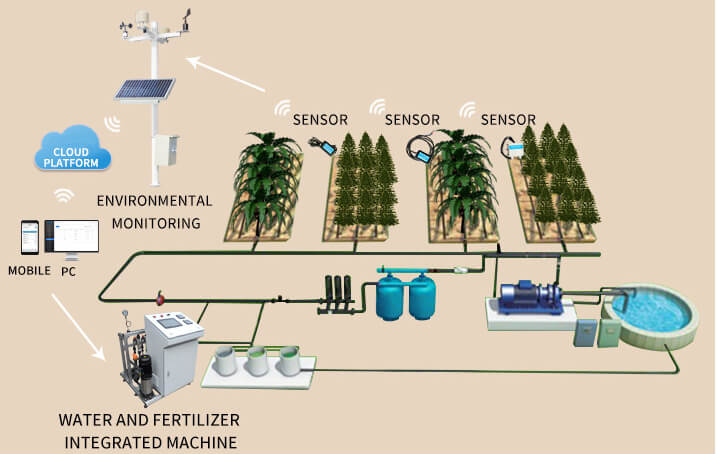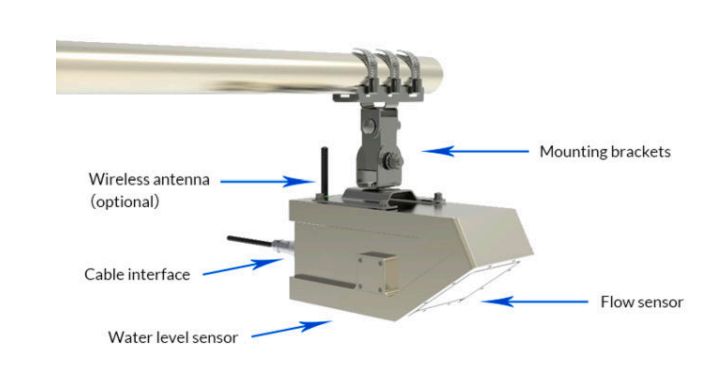Agriculture, a sector as old as civilization itself, is now embracing the digital age. One way it’s doing so is through the implementation of Smart Irrigation Systems. These systems represent a paradigm shift in how farmers and agriculturists manage water resources. Instead of using traditional ways, which often lead to overuse, wastage, and inefficiency, smart irrigation systems allow for precise control and management of water.
Smart Irrigation Systems are no longer a luxury or a novelty; they are a necessity in today’s agriculture landscape. With the growing global population, the demand for food is ever-increasing. To meet this demand, agriculture must become more efficient and sustainable. And this is where smart irrigation systems come into play.
These systems use data, sensors, and automated controllers to optimize water usage. The result? Better crop yield, lower water consumption, and significant cost savings. Now, let’s delve deeper into what a Smart Irrigation System project entails.
Understanding the Basics of a Smart Irrigation System Project
A Smart Irrigation System project starts with a clear understanding of the need for such a system. This need can be driven by several factors such as a scarcity of water resources, need to increase crop yield, or the desire to make farming more sustainable.

Once the need is established, a detailed plan is drawn up. This plan outlines the type of smart irrigation system to be used, the required hardware and software, and the implementation process. The plan also includes a cost-benefit analysis to ensure that the project is economically viable.
After the plan is finalized, the next step is the implementation of the project. This involves installing the various components of the smart irrigation system, connecting them, and setting up the software for control and monitoring. Once the system is up and running, it is regularly monitored and optimized to ensure it is functioning efficiently.
Advantages of Smart Irrigation Systems in Modern Agriculture
Smart Irrigation Systems offer numerous advantages in modern agriculture. First and foremost, they help conserve water. By precisely controlling the amount of water used, these systems can significantly reduce water wastage. This is particularly important in regions where water is scarce.
Secondly, smart irrigation systems can increase crop yield. By ensuring that crops get the right amount of water at the right time, these systems can enhance the growth and health of the crops, leading to higher yield.
The third advantage is cost savings. While the initial investment in a smart irrigation system might be high, the long-term savings in terms of water and energy costs can be substantial. In addition, these systems can also reduce labor costs as they automate the irrigation process.
How IoT is Revolutionizing Smart Irrigation Systems?
The Internet of Things (IoT) is playing a pivotal role in the evolution of smart irrigation systems. By connecting various components of an irrigation system to the internet, IoT makes it possible to remotely monitor and control the system.
For instance, with IoT, a farmer can use a mobile app to check the soil moisture levels in his field and adjust the watering schedule accordingly. This not only saves time and effort but also ensures that the crops get the right amount of water.
IoT also enables the integration of smart irrigation systems with other smart farming technologies such as drones, satellite imaging, and weather forecasting. This allows for a more holistic approach to farm management where different aspects of farming such as irrigation, fertilization, and pest control are seamlessly integrated.
What are the types of sensors used in smart irrigation system?
Sensors are the eyes and ears of a smart irrigation system. They monitor various parameters such as soil moisture, temperature, humidity, and rainfall and provide data to the irrigation controller. Based on this data, the controller adjusts the watering schedule.
There are several types of sensors used in smart irrigation systems. Soil moisture sensors, for instance, measure the amount of water in the soil. Temperature sensors measure the ambient temperature, and rainfall sensors measure the amount of rainfall.
Apart from these, there are also wind speed sensors, solar radiation sensors, and evapotranspiration sensors. All these sensors work together to provide a comprehensive picture of the field conditions and help optimize water usage.
Understanding the Functionality of a Smart Irrigation System Using Soil Moisture Sensor
The soil moisture sensor plays a critical role in a smart irrigation system. It measures the amount of water in the soil and provides this data to the controller. Based on this data, the controller decides when and how much to water the crops.
For instance, if the soil moisture sensor indicates that the soil is dry, the controller will trigger the irrigation system to water the crops. On the other hand, if the sensor indicates that the soil is wet, the controller will delay the watering.
This ensures that the crops get the right amount of water at the right time. It also prevents over-watering and under-watering, both of which can harm the crops and reduce yield.
Water meter functions in smart irrigation system
A water meter is another important component of a smart irrigation system. It measures the amount of water used by the system and provides this data to the controller.
The controller uses this data to monitor water usage and ensure that it is within the desired limits. If the water usage is too high, the controller can adjust the watering schedule to reduce it.
The water meter also helps detect leaks in the irrigation system. If the water usage is unexpectedly high, it could indicate a leak. In such cases, the controller can alert the farmer so that the leak can be fixed.
Exploring the Role of the Smart Sprinkler Controller
The smart sprinkler controller is the brain of the smart irrigation system. It takes data from the various sensors, analyzes it, and makes decisions on when and how much to water the crops.
The smart sprinkler controller is also connected to the internet, allowing for remote monitoring and control of the irrigation system. The farmer can use a mobile app to check the status of the irrigation system, adjust the watering schedule, or even manually start or stop the irrigation.
The smart sprinkler controller can also integrate with other smart farming technologies such as weather forecasting. For instance, if the forecast predicts rain, the controller can delay the watering to save water.
Case Studies of Successful Smart Irrigation Systems
Across the globe, smart irrigation systems are being successfully implemented, leading to significant improvements in water efficiency, crop yield, and cost savings.
In Israel, for instance, smart irrigation systems have been instrumental in turning the arid desert into a fertile farmland. By precisely controlling the water usage, these systems have helped increase crop yield and make farming sustainable in a region with scarce water resources.
In California, a state plagued by frequent droughts, smart irrigation systems have helped farmers save water and maintain their crop yield. These systems have also been instrumental in reducing the energy costs associated with pumping water.
Future Trends: The Next Big Things in Smart Irrigation
The future of smart irrigation looks promising, with several exciting trends on the horizon. One such trend is the integration of artificial intelligence (AI) and machine learning into smart irrigation systems.
With AI and machine learning, these systems can learn from past data and make more accurate predictions on when and how much to water the crops. This can further optimize water usage and increase crop yield.
Another trend is the increasing use of drones in smart irrigation. Drones can be equipped with sensors to monitor field conditions from above. They can also be used to water the crops, particularly in large farms where manual watering is impractical.
Conclusion
In conclusion, smart irrigation systems represent a significant advancement in agriculture. By using data, sensors, and automation, these systems optimize water usage, increase crop yield, and save costs. With the advent of technologies such as IoT, AI, and drones, the potential of smart irrigation systems is set to grow even further. As the global demand for food increases, the role of smart irrigation systems in meeting this demand cannot be overstated.




